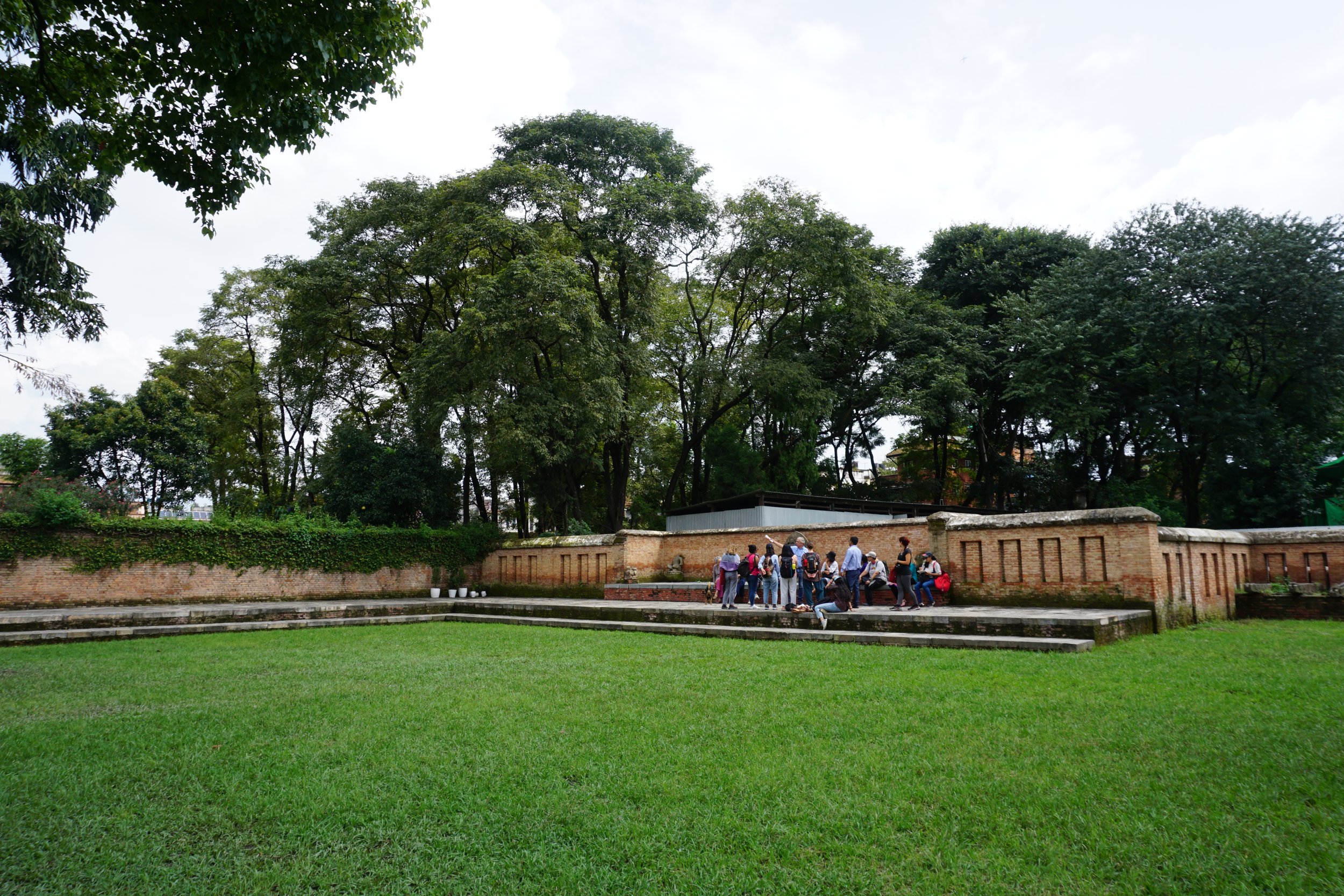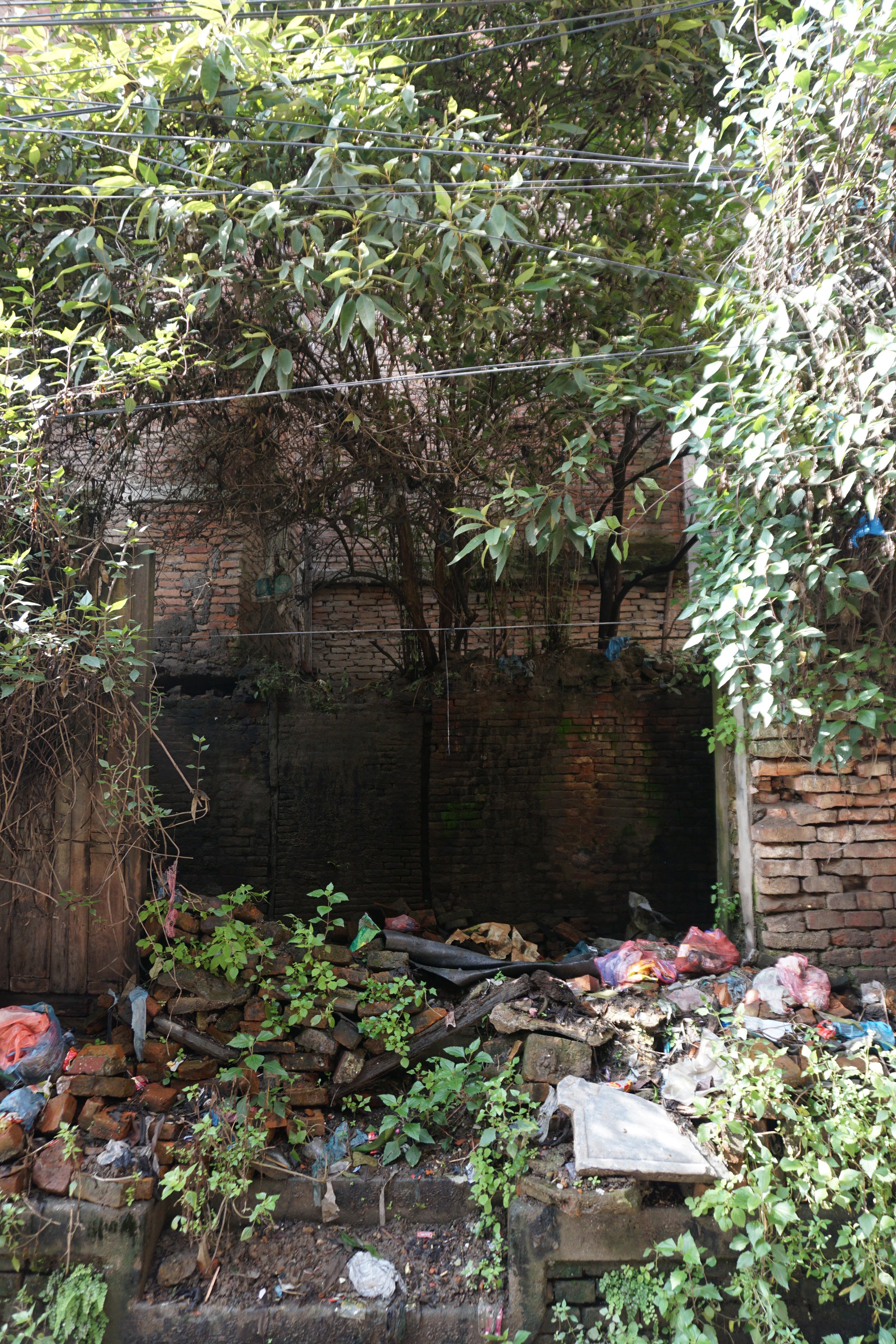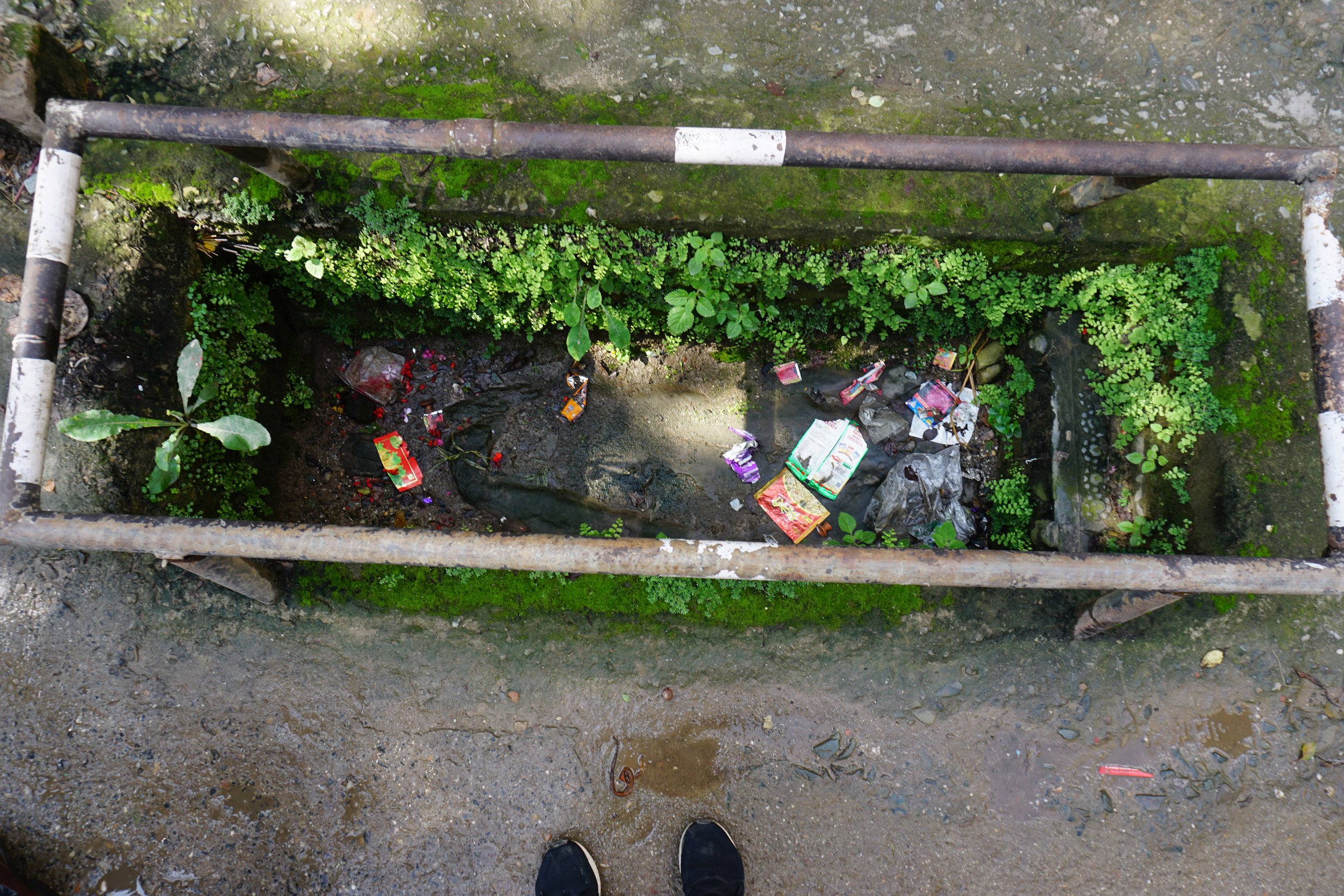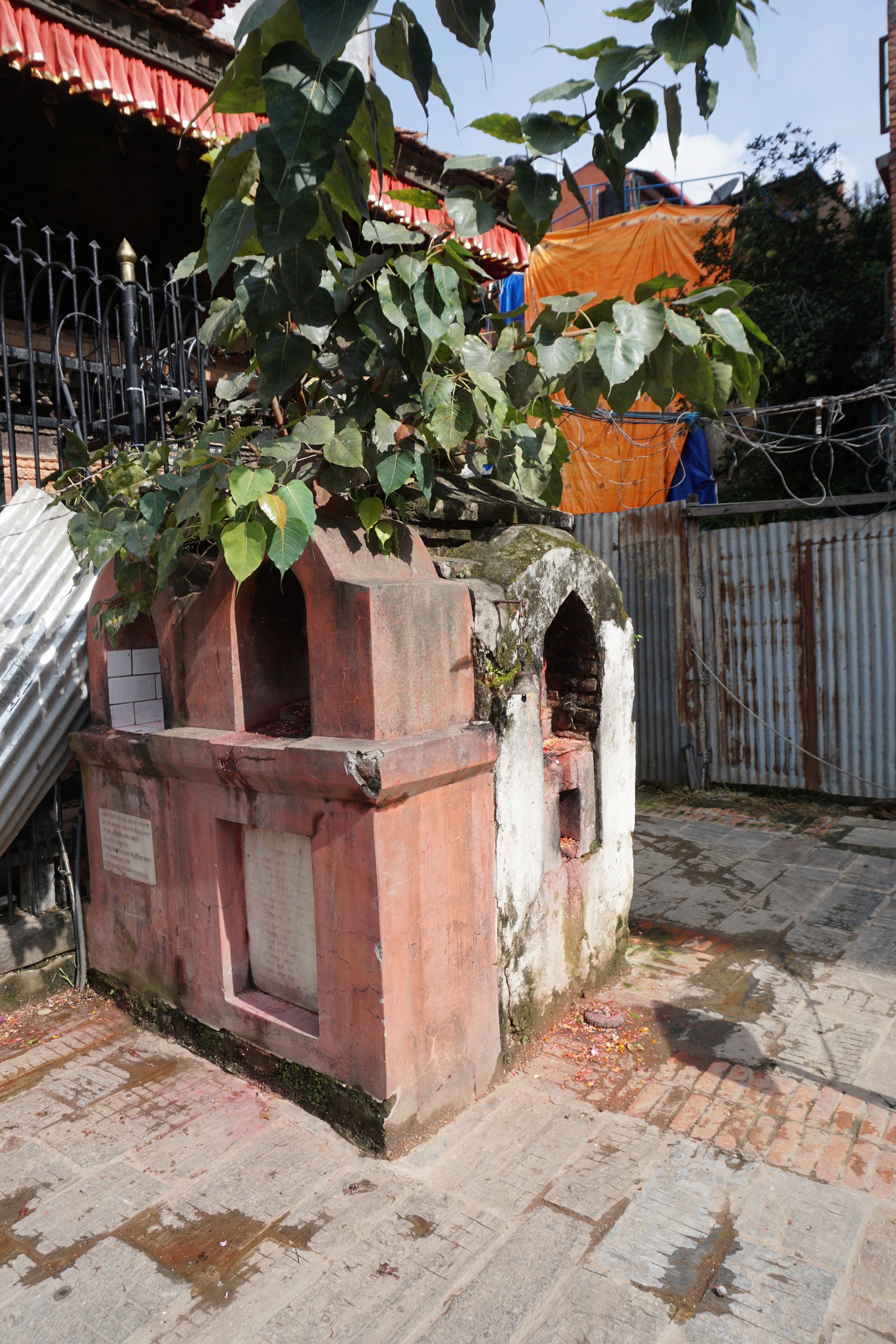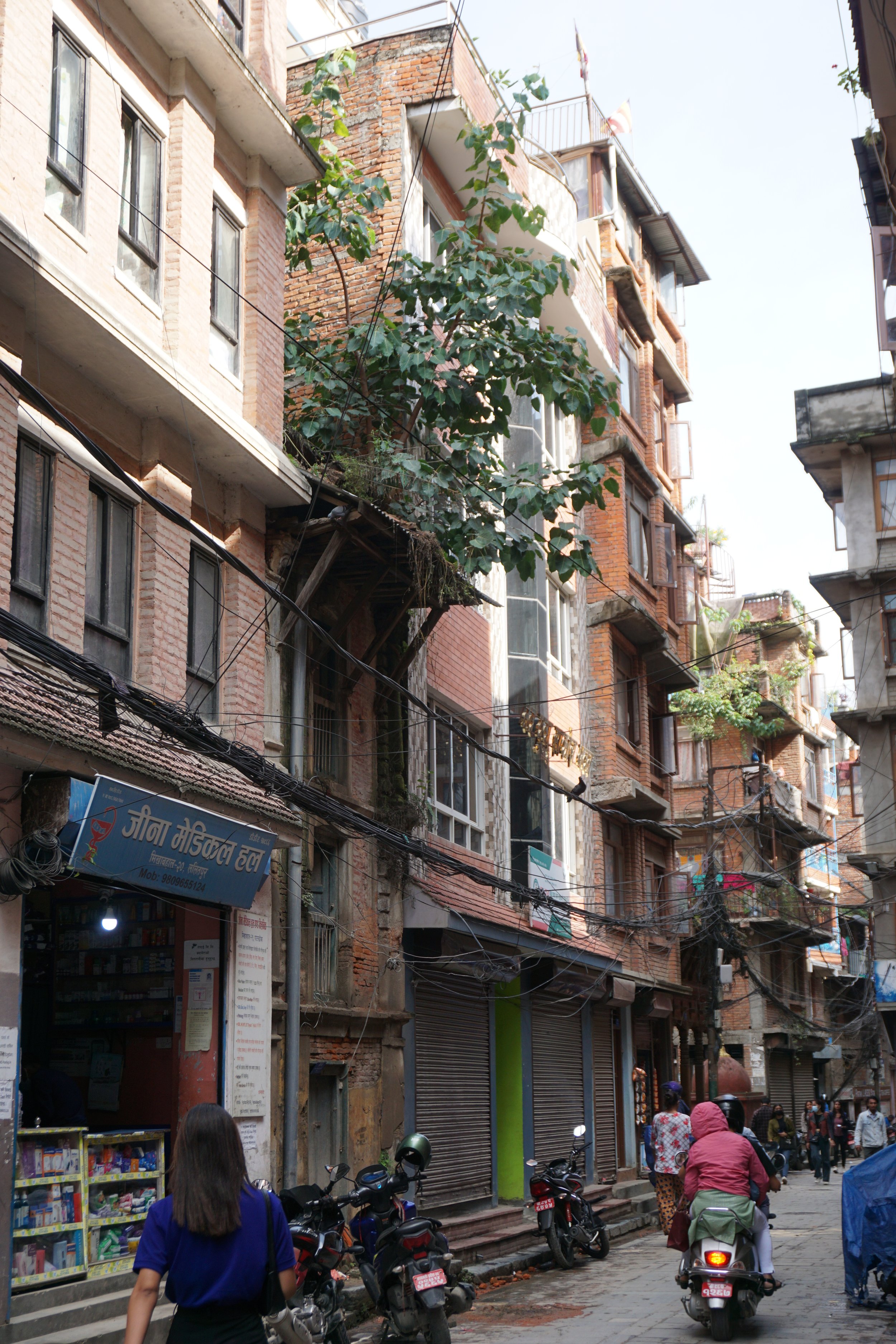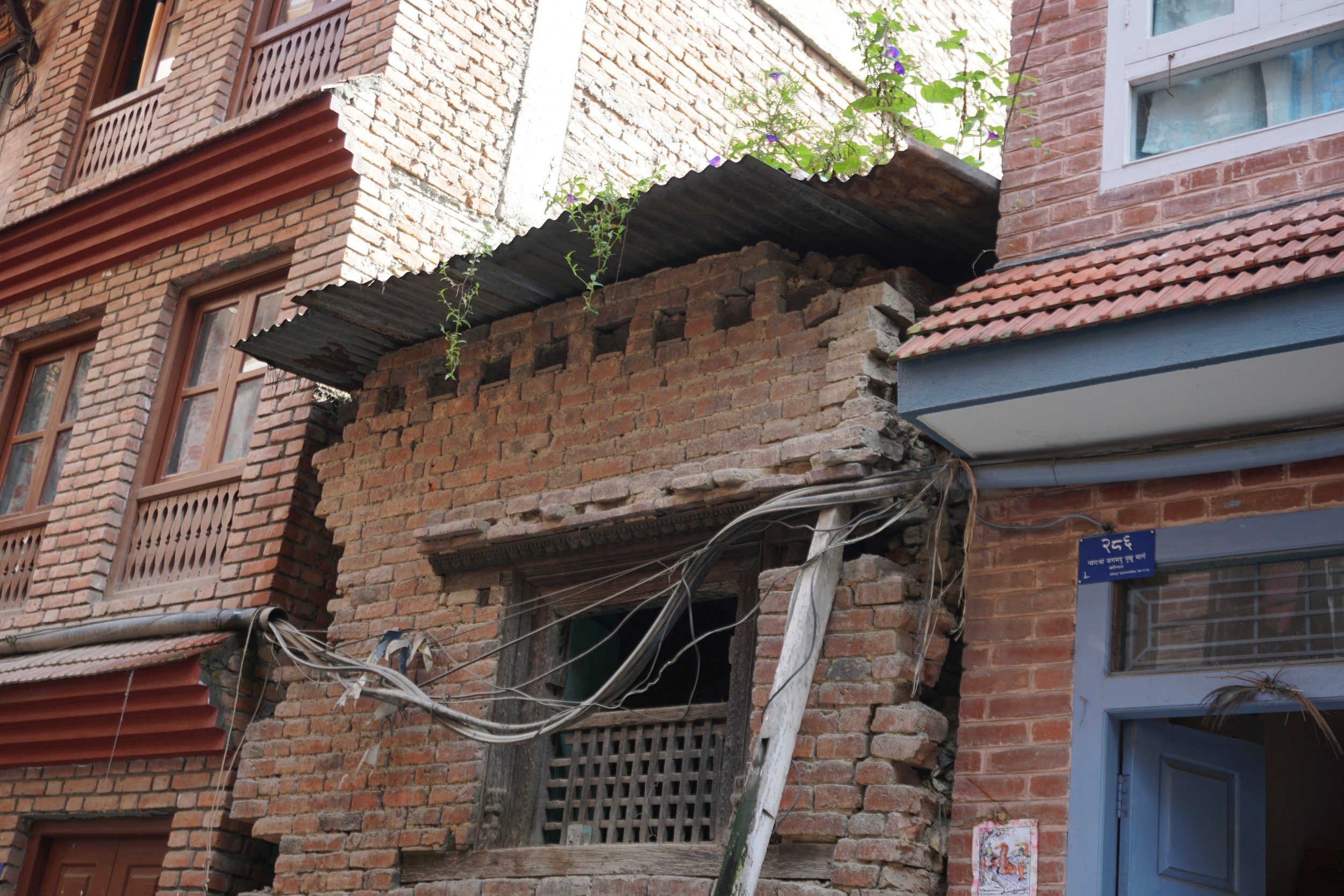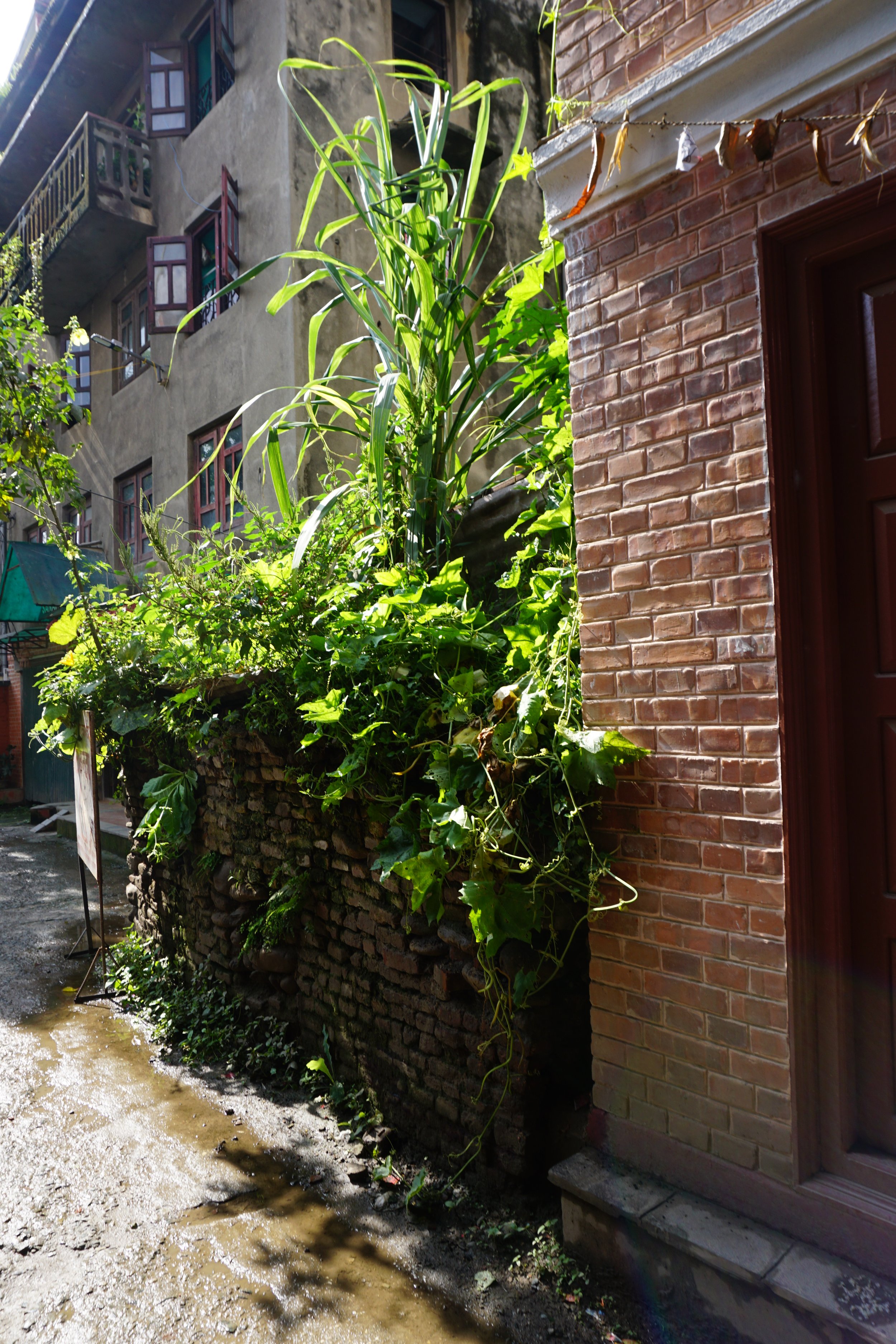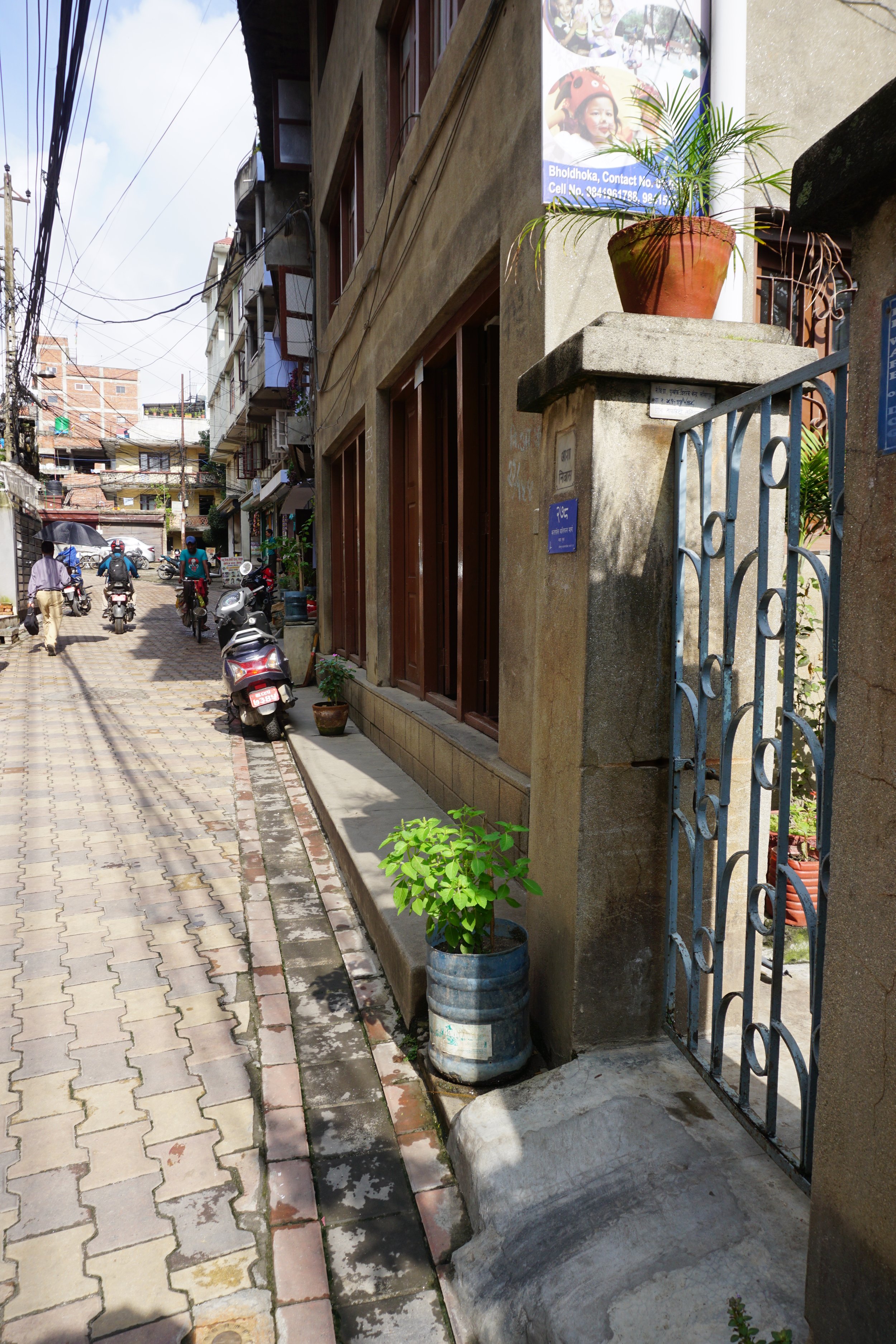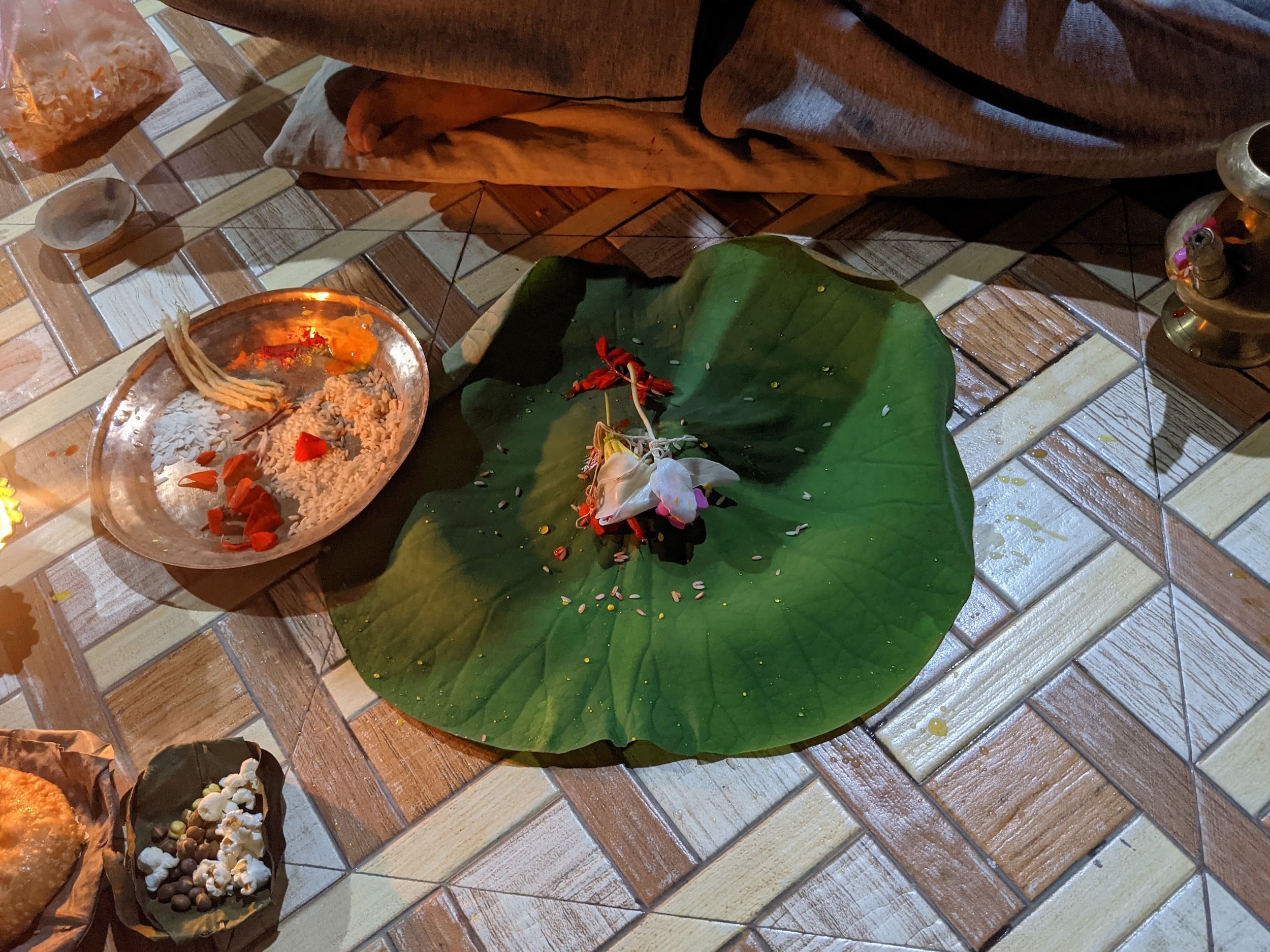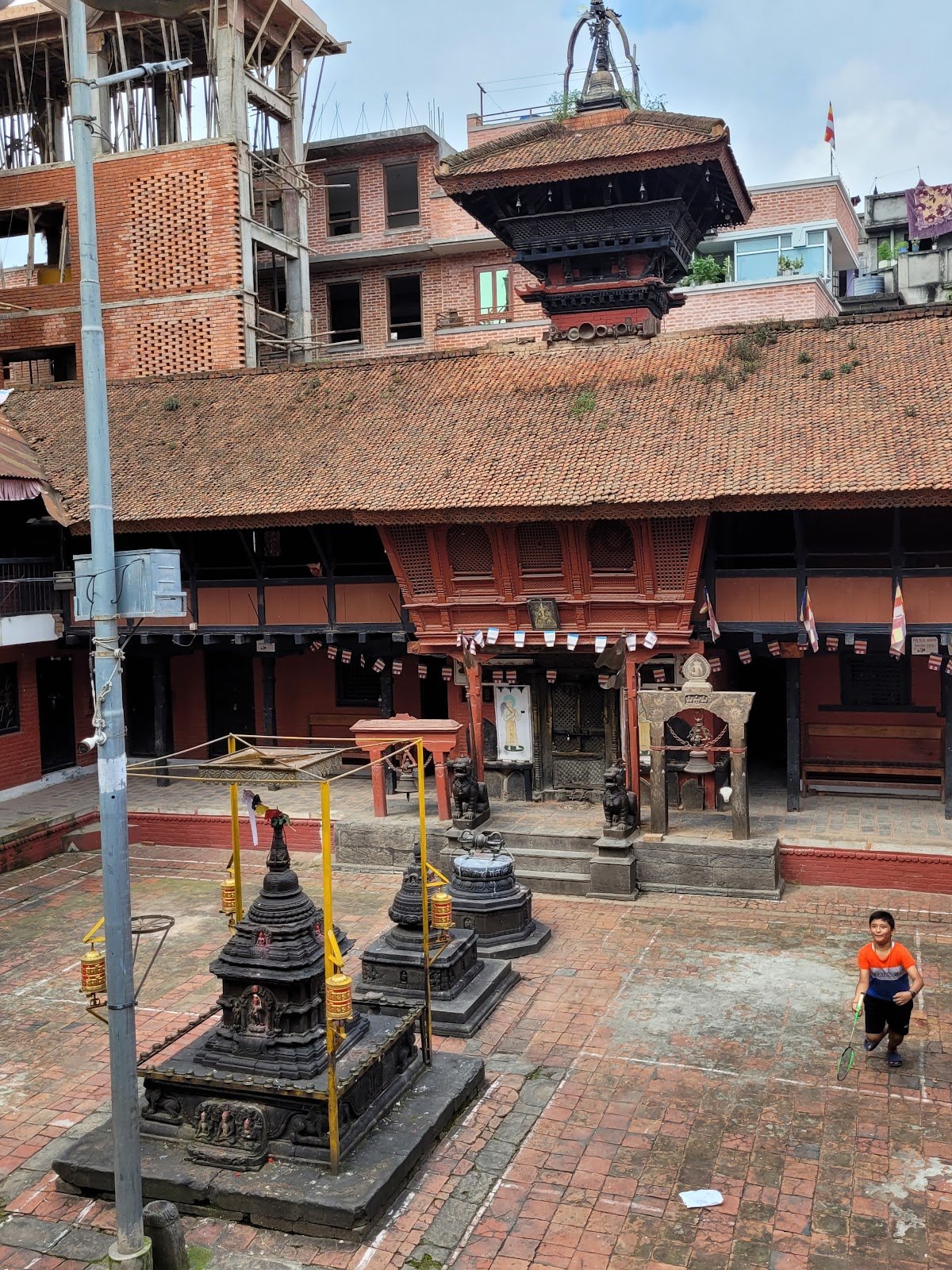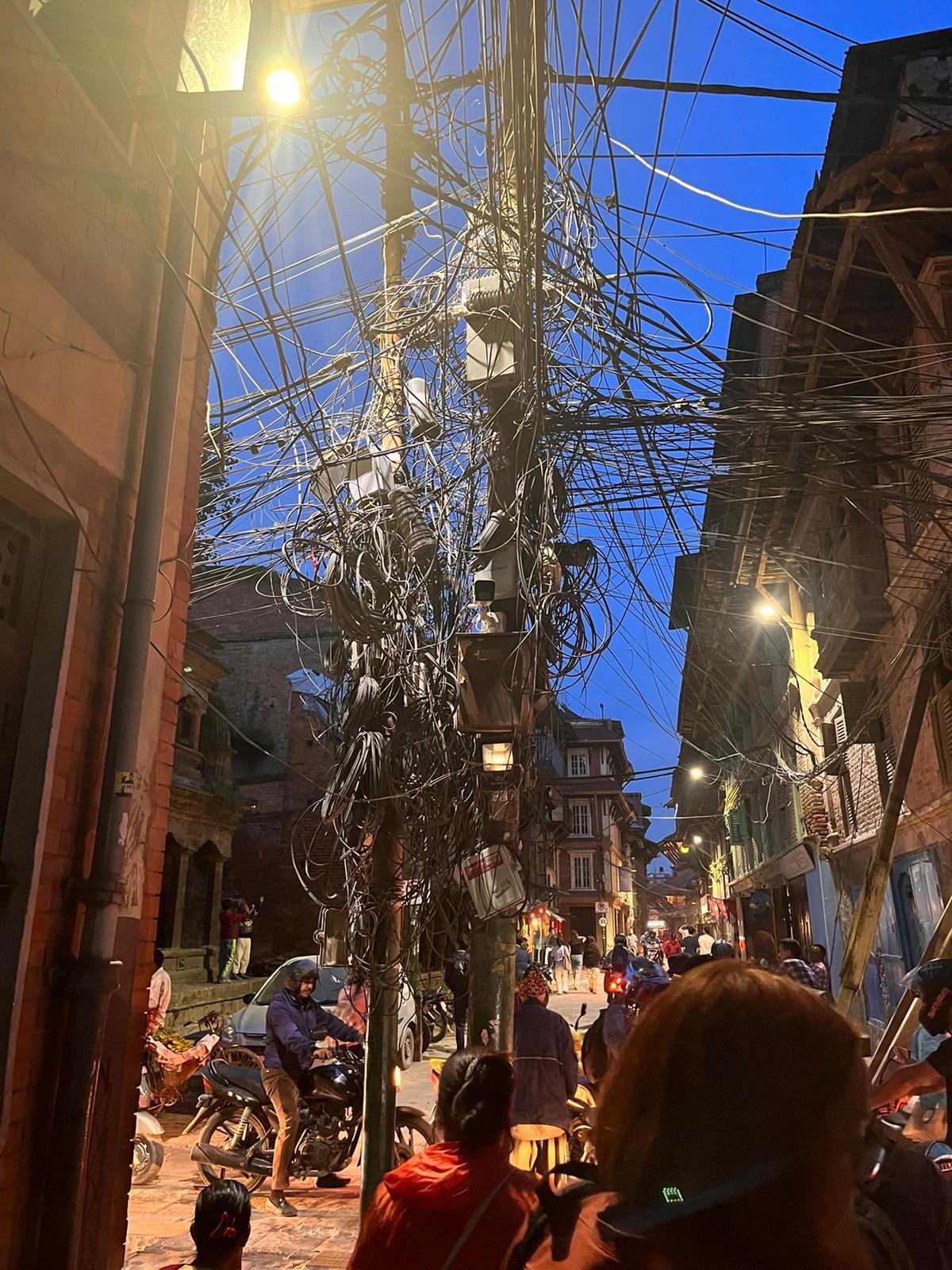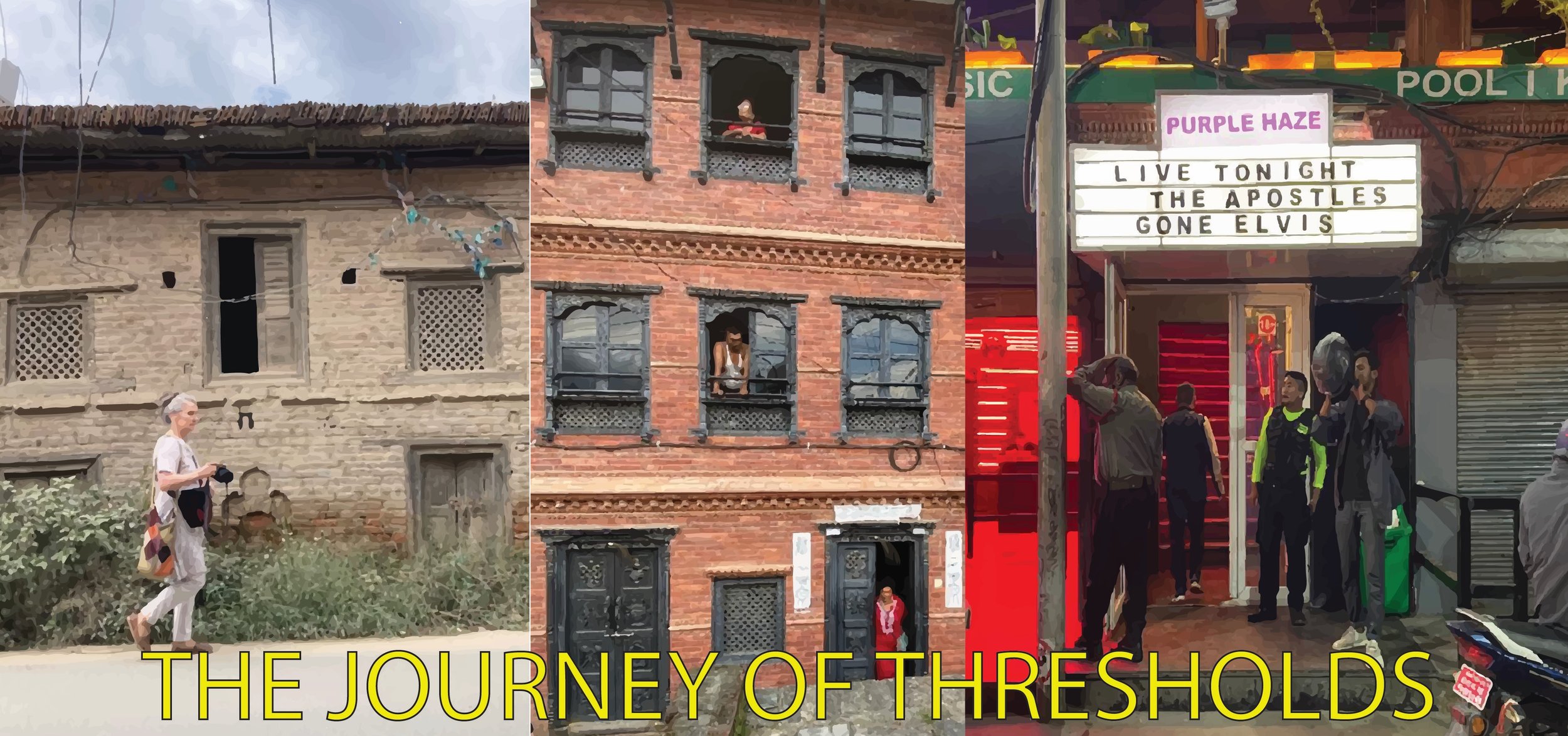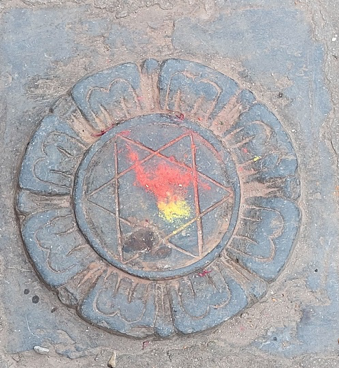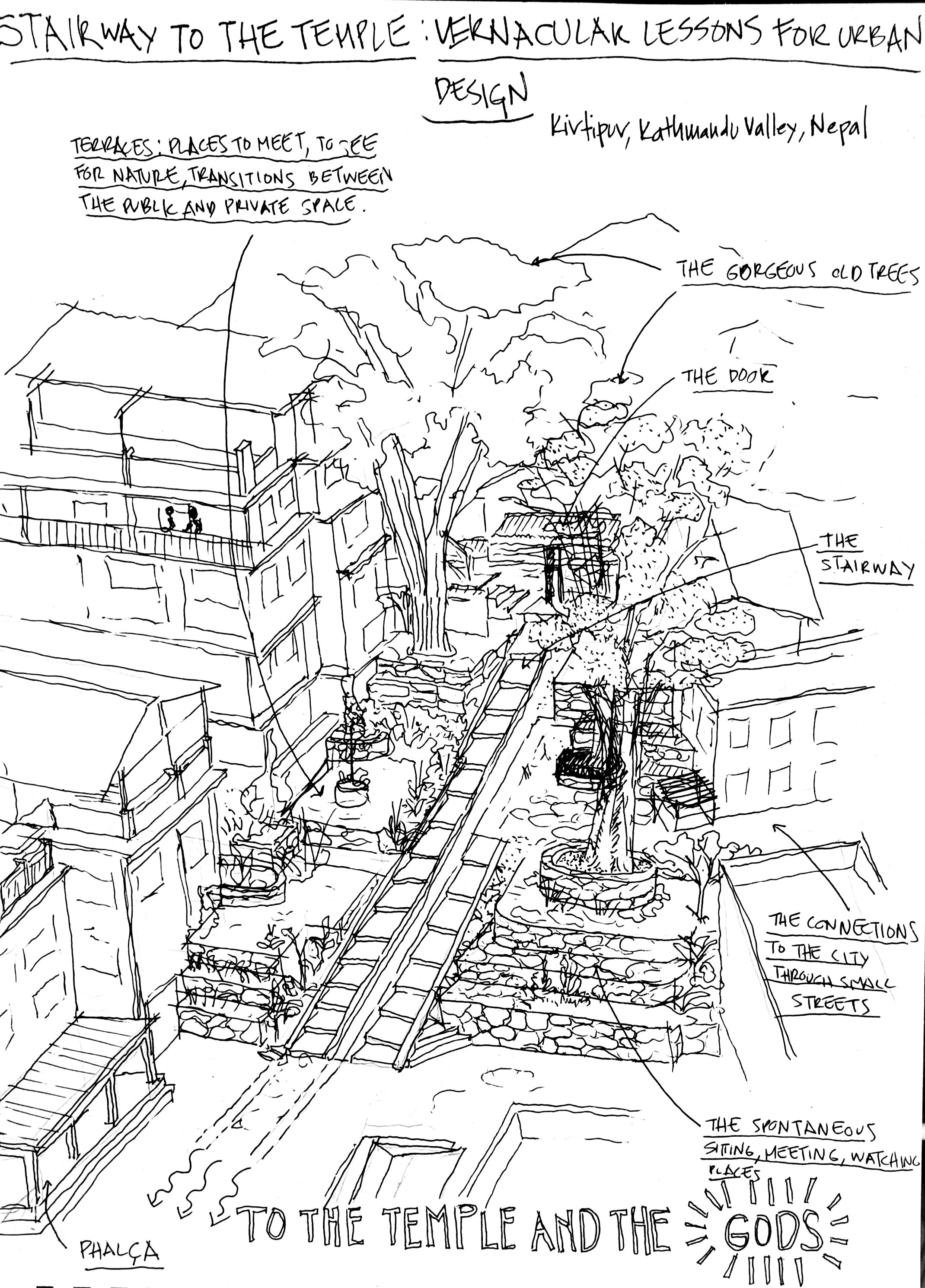Nija Maharjan is an illustrator and freelance graphic designer. She studies at the Kathmandu University School of Arts.
On our heritage walk in Patan, I kept on noticing the Greens peeking from one place and another, as if they were following me on the walk, refreshing my childhood memories of the place and making me nostalgic. While I remembered seeing most of these plants from when I was a child, I only could recall a few of their names because most of them would be referred to as ghyaan (weed). There is a clustered wildflower that looks like a cauliflower that would be used so much during our playtimes; I hoped I could encounter them, but unfortunately, I didn’t, and it frustrates me that I don’t even know its name to search for and ask around.
These private land spaces are called “k: ban: (kein- vegetables, ban- floor, bu- field). They were traditionally used to grow vegetables; some of them are now left unattended, to be encroached upon by shrubs and weeds. Photo: Nija Maharjan.
I was born and raised in Patan, a town with rows of old houses carving narrow alleys that would open up to wide courtyards with wells and stone spouts, temples and baahaas that house gods and goddesses. Amongst them lived the Greens, some growing wildly out of cracks and unattended lands, and some cared for and protected. The greenscapes, together with other architectural spaces, contributed to the design of this cityscape.
A building encroached by plants. Photo: Nija Maharjan.
Finding gems has been an interesting experience for me, as I discovered more ways in which people, plants, and Patan interact. The Newar settlements are arranged in a manner where people usually live in closed communities, and they have agricultural land on the outskirts of the city. Plants have thus been central to their life, not only for food but also for culture, religious practices, medicines, and aesthetics. Having said that, the architecture of the Newar houses doesn’t seem to have designed designated spaces for having plants indoors or even on the roofs, as they were covered with sloped tiles with a small opening only. I am guessing the concept of planting plants in pots and caring for them came much later only as the word gamalaa used for “pots,” is a loan word. Only the common public spaces and private unused lands must have contributed to the greenscape of this city.
What would have been moss-carpeted walls with ferns popping out from cracks and the sidewalks with wildly growing greens are barely seen, as most structures have been replaced by concrete and plaster. Urbanization has changed the face of Patan drastically in the past few decades; along with it, the percentage of greens has dwindled. Despite the reality of spaces being converted into building structures and prevalence of concrete spaces, people have found alternative and innovative ideas for including plants in their surroundings. As we walked around the city, we could see planters and recycled jars used for plants and placed in public spaces and around the neighborhood.
People using cement rings to hold plants. Photo: Nija Maharjan.
People using water jars and terracotta pots to hold plants. Photo: Nija Maharjan.
I believe their presence in place is as important as other tangible heritages, for the fact that indigenous people include them in medicinal and religious matters. These plants are native to the place and define the culture, rituals, and stories of the people living here. When I recall all the festivals, each of them requires different leaves, flowers, or plants, and they used to be available around the neighborhood or in the fields. Because it is hard to find the aforesaid plants, people have adapted the rituals accordingly. Now that I think of the availability of those plants at that time of the year, it must also have influenced the rituals of that occasion.
Leaves of various plants growing around the neighborhood are used for various religious rituals. Photos: Priyanka Adhikari.
While these green spaces have been prevalent in the places and participation in the lives of people, they are still not given much consideration. I have an understanding that the study of the native plants in relation to the people and place of Patan would unfold beautiful stories and important insights.
